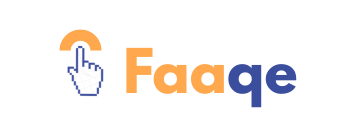I’ll structure it into 5 major sections,
- The Cognitive Revolution in the Workplace (Introduction)
- Understanding CogniFit: The Science Behind the System
- How Cognitive Training Transforms Employee Performance
- Implementing CogniFit in Your Organization
- The Future of Work and Brain Training in 2025 and Beyond
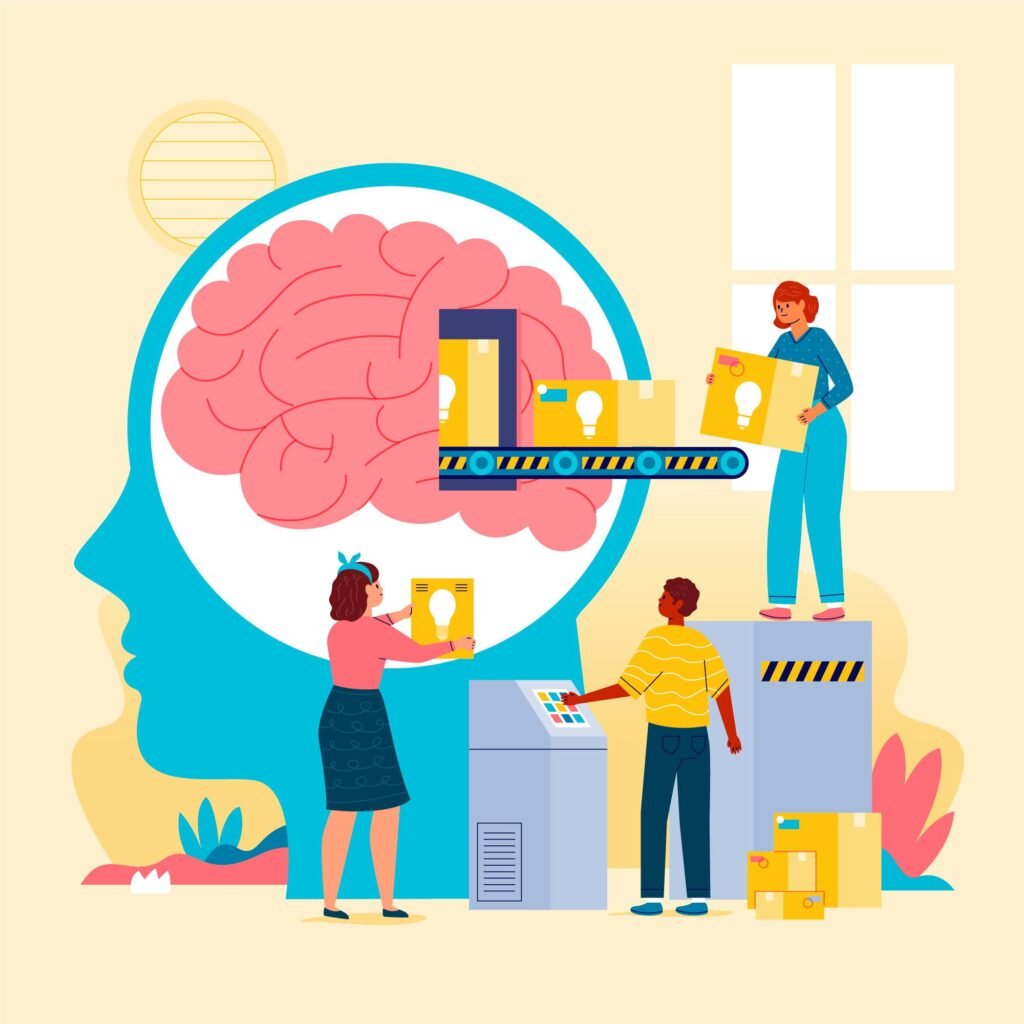
Section 1: The Cognitive Revolution in the Workplace (Introduction)
In today’s fast-paced, data-driven economy, human performance has become the ultimate competitive edge. Organizations across industries are no longer focusing solely on technical skills or processes; they’re investing in something deeper — the brain itself. In 2025, the modern workplace is defined by agility, innovation, and adaptability, all of which stem from strong cognitive function.
This is where CogniFit, a neuroscience-based cognitive training platform, is redefining how businesses think about productivity and human potential. By harnessing cognitive science and AI-driven personalization, CogniFit empowers employees to optimize their mental performance, from attention and memory to decision-making and emotional regulation.
The Cognitive Performance Gap
Despite the rise of technology, many employees are mentally overloaded. The cognitive demands of multitasking, managing digital distractions, and constant adaptation to new tools have led to a silent crisis: cognitive fatigue. Employees are busier than ever but not necessarily more productive.
Research from global workforce studies indicates that mental distractions account for nearly 30% productivity loss across teams. The ability to think critically, maintain focus, and regulate stress has become as essential as technical know-how. Yet, traditional corporate training programs often overlook this — focusing instead on skills and compliance rather than the core engine of performance: the human brain. This performance gap is where CogniFit steps in.
Why 2025 Is the Year of Cognitive Optimization
The year 2025 marks a turning point. Organizations are increasingly adopting neuroscience-backed tools to enhance workplace efficiency and employee well-being. The rise of AI-driven training, remote collaboration, and mental wellness initiatives has made cognitive fitness not just a perk but a strategic necessity.
Imagine a workforce that can adapt to change faster, manage stress effectively, and stay engaged during long hours of digital collaboration. That’s what cognitive training enables. CogniFit’s technology makes it possible to measure, train, and enhance mental skills in ways that were previously only available in research labs or clinical settings.
What Is CogniFit and Why It Matters
CogniFit is more than just a brain training app — it’s a cognitive development ecosystem. It offers scientifically validated assessments and personalized training programs to improve specific cognitive skills such as:
- Attention and concentration
- Working and short-term memory
- Planning and problem-solving
- Emotional intelligence
- Reaction time and processing speed
Unlike generic “brain game” apps, CogniFit’s programs are backed by decades of neuroscientific research and clinical trials. The platform uses algorithms that adapt in real-time to the user’s performance, ensuring the training remains both challenging and effective.
For organizations, CogniFit provides analytics that help HR teams and managers understand cognitive strengths and weaknesses within their teams — without invading privacy. This data-driven insight helps leaders make smarter decisions about training, workload distribution, and employee support.
The Link Between Cognitive Fitness and Business Results
When employees improve their cognitive abilities, the ripple effects on organizational performance are profound. Enhanced attention translates into fewer errors and better focus during complex tasks. Improved memory aids faster learning and skill retention. Stronger executive function means better decision-making under pressure.
A cognitively fit team is more resilient, creative, and adaptive — the three pillars of success in modern business. Research in organizational psychology consistently shows that cognitive flexibility (the ability to shift thinking and adapt to new situations) is one of the strongest predictors of innovation and leadership effectiveness.
Why Cognitive Training Outperforms Traditional Development
Most corporate learning initiatives focus on knowledge — teaching employees what to do. CogniFit, on the other hand, focuses on improving how employees think. By strengthening the neural foundations of cognition, employees can learn faster, recall more accurately, and sustain mental energy longer.
Traditional training is often forgotten weeks after completion. Cognitive training creates lasting neural change. It enhances neuroplasticity, the brain’s ability to form new connections, which means employees can continuously improve even outside formal training sessions.
The New Competitive Advantage
In 2025, companies that prioritize cognitive fitness are seeing tangible benefits:
- Higher productivity: Employees process information more efficiently and complete tasks faster.
- Reduced burnout: Training improves focus and emotional regulation, leading to healthier work-life balance.
- Improved innovation: Cognitive flexibility and problem-solving drive creative thinking.
- Better collaboration: Enhanced empathy and attention support effective teamwork and communication.
Cognitive training isn’t just an HR initiative — it’s a strategic investment in human capital. By improving how employees think and respond, organizations unlock higher performance at every level, from entry-level employees to top executives.
The Mind as the Next Frontier of Corporate Growth
As automation and AI reshape industries, the most valuable asset left for human workers is their cognitive ability. Machines can process data, but they can’t replace emotional intelligence, critical thinking, or creativity. Companies that train their workforce to think smarter — not just work harder — will dominate the future economy.
CogniFit offers the bridge between neuroscience and real-world business outcomes. It’s not just about playing games or boosting memory; it’s about developing the mental infrastructure that supports sustainable performance, well-being, and innovation.
In the following sections, we’ll explore exactly how CogniFit works, the science that powers it, and the measurable ways it transforms workplaces around the world.
Section 2: Understanding CogniFit — The Science Behind the System
The human brain is often described as the most complex structure in the universe. With billions of neurons forming trillions of connections, it drives every decision, every innovation, and every collaboration in the workplace. Understanding how to optimize this system is the foundation of CogniFit’s mission.
While many digital training platforms promise “brain boosting,” CogniFit stands out because its entire methodology is rooted in neuroscientific research, cognitive psychology, and machine learning. In this section, we’ll explore how CogniFit works at a scientific level, why its approach is validated by research, and how it turns cognitive theory into measurable workplace results.
The Neuroscience of Cognitive Training
Cognition refers to the mental processes that allow us to perceive, process, and respond to information. These include memory, attention, executive function, reasoning, and problem-solving — the skills that define how efficiently we work and adapt.
CogniFit’s platform is built on decades of cognitive neuroscience research showing that the brain is malleable. Through a process known as neuroplasticity, the brain can form new neural pathways and strengthen existing ones with targeted stimulation and repetition.
When employees engage in specific cognitive exercises, they are not just “playing games” — they are literally rewiring their neural circuitry. The result is enhanced processing speed, improved concentration, better decision-making, and greater resilience under pressure.
In workplace terms, this translates to sharper focus during meetings, quicker learning of new systems, and a stronger ability to handle cognitive load in high-stakes environments.
CogniFit’s Cognitive Model
CogniFit organizes the human mind into more than 20 core cognitive skills, each mapped to specific neural networks in the brain. The platform categorizes these skills into key domains such as:
- Attention – the ability to focus on relevant information while filtering out distractions.
- Memory – both working memory (temporary holding and manipulation of information) and long-term memory.
- Perception – interpreting sensory data accurately and rapidly.
- Coordination – synchronizing physical and mental responses, crucial in multitasking.
- Reasoning – logic, planning, and decision-making capabilities.
Each of these areas can be assessed and trained through CogniFit’s modules. When an employee first begins using the platform, they undergo a Cognitive Assessment Battery (CAB) — a scientifically designed test that evaluates strengths and weaknesses across these domains.
The system then generates a personalized training plan, tailored to improve the areas where the individual needs the most development.
AI-Powered Personalization
One of the most powerful aspects of CogniFit is its AI-driven adaptability. The platform continuously learns from the user’s performance, adjusting difficulty and exercise type to ensure the brain remains challenged — a key requirement for neuroplastic growth.
If a user excels at memory exercises, CogniFit automatically increases complexity or introduces new patterns to avoid cognitive plateauing. If the system detects fatigue or lower engagement, it may shift to different cognitive tasks to maintain motivation.
This dynamic feedback loop mimics the principles of adaptive learning, where training evolves in real-time to maximize effectiveness. It ensures that every employee’s experience is unique, efficient, and scientifically optimized for their brain.
The Validation: Scientific Studies and Peer-Reviewed Research
CogniFit’s credibility lies not in marketing but in peer-reviewed science. The platform has been involved in over 300 independent research studies, conducted in partnership with universities and clinical institutions worldwide.
These studies have validated CogniFit’s ability to improve cognitive performance across populations, including students, professionals, seniors, and individuals with neurological conditions such as ADHD and traumatic brain injury.
For example:
- Research published in Frontiers in Psychology demonstrated that CogniFit’s training significantly improved working memory and executive function in adults.
- A clinical study with healthcare professionals found notable gains in attention and task accuracy after consistent CogniFit sessions.
- Another trial with corporate employees revealed improvements in reaction time and cognitive flexibility, key components of workplace performance.
These studies reinforce that CogniFit is not just an app but a scientifically grounded cognitive development platform capable of producing measurable neurocognitive change.
How CogniFit Measures Cognitive Performance
CogniFit employs a quantitative assessment system that translates complex cognitive processes into understandable metrics. After each exercise, users receive data-driven feedback showing how their performance compares to both their own baseline and general population averages.
The analytics dashboard displays progress in areas like:
- Attention and focus
- Processing speed
- Short-term and working memory
- Executive control and decision-making
- Cognitive flexibility
For organizations, aggregated and anonymized data can be used to assess team-wide trends. For instance, a company might notice that certain departments struggle with attention-related tasks or mental fatigue. CogniFit insights allow HR leaders to design interventions — like adjusted workloads, improved workflows, or more training sessions — based on real cognitive data rather than guesswork.
The Connection Between Cognitive Science and Productivity
From a neuroscience perspective, productivity is not just a behavioral outcome — it’s a cognitive state. High productivity arises when the prefrontal cortex (responsible for focus and decision-making) and the limbic system (responsible for emotion and motivation) are functioning in harmony.
CogniFit’s programs are structured to enhance both. Through consistent cognitive exercises, the platform helps employees strengthen neural circuits responsible for:
- Sustained attention: enabling longer periods of deep work.
- Working memory: supporting faster comprehension and task execution.
- Cognitive inhibition: reducing susceptibility to distractions.
- Mental flexibility: helping employees adapt to sudden changes or challenges.
In essence, CogniFit doesn’t just make employees smarter — it makes them more mentally efficient.
Bringing Science to the Workplace
What sets CogniFit apart is its ability to translate academic neuroscience into practical workplace applications. The exercises are gamified to maintain engagement, but each task is scientifically calibrated to activate specific cognitive systems.
For example:
- A visual tracking exercise might stimulate attention and spatial reasoning.
- A sequencing challenge could engage memory and executive control.
- An emotional recognition task may train empathy and emotional intelligence — vital for leadership and teamwork.
Over time, these small improvements compound into significant cognitive growth. Employees become better at learning new tools, managing stress, and making high-stakes decisions — all without additional physical or mental strain.
Why Companies Are Turning to CogniFit in 2025
The workplace of 2025 is characterized by rapid digital transformation and hybrid work environments. Employees must juggle remote collaboration tools, data management systems, and constant information flow. Cognitive overload is now a widespread issue, often leading to burnout and disengagement.
CogniFit addresses this challenge by providing a structured, evidence-based method to build cognitive resilience. Unlike wellness programs that focus solely on mindfulness or relaxation, CogniFit enhances the underlying mental processes that govern performance and adaptability.
Companies are adopting CogniFit for several strategic reasons:
- Improved Learning Agility – Employees can acquire and apply new knowledge faster.
- Enhanced Decision Quality – Stronger executive function leads to better strategic thinking.
- Increased Focus and Attention Span – Essential for productivity in an age of distraction.
- Reduced Cognitive Fatigue – Training builds mental stamina, preventing burnout.
- Boosted Innovation – Cognitive flexibility encourages creative problem-solving.
In short, CogniFit represents the intersection of neuroscience, technology, and performance optimization — a powerful trifecta for modern organizations.
Section 3: How Cognitive Training Transforms Employee Performance
The modern workplace is a living ecosystem — constantly adapting to new technologies, market shifts, and cultural expectations. In this environment, the greatest resource an organization possesses isn’t machinery, software, or even data — it’s the human mind. Yet, until recently, very few companies invested in developing that resource with the same precision as they would a business strategy.
CogniFit has changed that. By translating cognitive science into practical, measurable tools, it empowers organizations to enhance the mental efficiency, creativity, and resilience of their teams. This section explores exactly how cognitive training transforms workplace performance across key areas: attention, learning, leadership, collaboration, and stress management.
1. From Busy to Productive: Enhancing Focus and Attention
Distraction is the silent killer of modern productivity. Employees are bombarded with notifications, emails, and multitasking demands that fragment attention and slow output. Studies suggest that it can take up to 23 minutes for the brain to regain full focus after a single interruption.
CogniFit’s attention-based exercises directly target the neural mechanisms that govern concentration. Through regular training, employees strengthen their ability to sustain focus on a task, ignore irrelevant stimuli, and switch efficiently between cognitive modes.
For instance:
- Sustained Attention Tasks help improve focus during long projects or meetings.
- Selective Attention Exercises train users to filter distractions in open offices or digital workspaces.
- Divided Attention Challenges enhance multitasking capabilities for employees handling multiple projects.
Over time, these exercises create a measurable shift in mental endurance. Employees begin to complete tasks faster and with fewer mistakes. Managers notice fewer lapses in quality, and team communication becomes more efficient.
Result: Productivity rises not because people work harder, but because they work smarter and more efficiently.
2. Sharper Learning and Knowledge Retention
In fast-changing industries, an employee’s ability to learn quickly is just as valuable as their existing expertise. Whether adapting to new software, regulations, or customer trends, learning agility is the key differentiator between average and high-performing teams.
CogniFit’s memory training modules strengthen both working memory (short-term retention and manipulation of data) and long-term memory (consolidation and recall). When employees train these skills, they become better at retaining information from meetings, recalling procedures under pressure, and connecting new concepts with existing knowledge.
For example, customer service representatives who undergo CogniFit training can remember product details and client histories more effectively. Engineers can recall technical procedures faster, and sales teams retain more from onboarding sessions.
Furthermore, CogniFit helps combat cognitive overload — the mental fatigue that occurs when employees are bombarded with information. By improving the brain’s efficiency in processing and storing data, CogniFit enables smoother learning curves and faster adaptation.
Result: Training times shorten, knowledge retention improves, and organizations see quicker returns on employee development investments.
3. Building Cognitive Flexibility for Innovation
Innovation is not just a process — it’s a cognitive skill. The ability to connect disparate ideas, approach problems from new angles, and adapt to evolving challenges depends on a brain’s cognitive flexibility.
CogniFit includes exercises that enhance creative and adaptive thinking by challenging the brain to find new strategies, reframe information, and form novel associations. These tasks target the prefrontal cortex, the area responsible for high-level decision-making and creativity.
For teams, this translates into:
- Faster problem-solving in dynamic environments.
- More innovative brainstorming sessions.
- Greater openness to feedback and change.
- Improved risk assessment and strategic foresight.
Organizations that incorporate cognitive flexibility training often see a cultural transformation: employees stop resisting change and start embracing it. Instead of feeling threatened by new challenges, they become energized by them.
Result: A more innovative and adaptable organization, capable of thriving amid uncertainty.
4. Leadership Development and Emotional Intelligence
Leadership today requires more than management skills — it requires emotional and cognitive intelligence. The best leaders are not just analytical; they’re self-aware, empathetic, and capable of regulating stress while making clear decisions.
CogniFit offers modules that train emotional processing, empathy, and decision-making. These aren’t abstract qualities; they are functions of specific neural systems that can be improved with the right kind of mental stimulation.
For example:
- Emotion recognition exercises help leaders interpret facial expressions and emotional cues, enhancing empathy in communication.
- Decision-making tasks strengthen executive control, ensuring more rational and balanced leadership responses.
- Planning and reasoning games improve strategic thinking and foresight.
When leaders improve their cognitive and emotional regulation, it positively impacts the entire organization. Teams feel more supported, conflicts are resolved more efficiently, and communication becomes transparent.
Moreover, CogniFit’s leadership-oriented programs provide measurable data that can be integrated into corporate leadership development plans, helping HR departments identify and nurture high-potential individuals.
Result: Stronger leaders who inspire trust, make sound decisions, and maintain composure under pressure.
5. Team Collaboration and Communication
Cognitive training doesn’t just enhance individual performance; it strengthens collective intelligence. A cognitively fit team communicates better, synchronizes more effectively, and demonstrates greater problem-solving efficiency.
CogniFit indirectly supports collaboration through improvements in:
- Attention and listening – Employees become better at following discussions and retaining shared information.
- Cognitive empathy – Understanding others’ perspectives becomes easier, reducing miscommunication.
- Working memory – Teams can hold complex projects in mind without losing track of goals.
When each team member enhances their mental clarity and focus, meetings become shorter, decisions faster, and execution smoother. In creative environments, this cognitive alignment fosters synergy, where the team produces results greater than the sum of its parts.
Result: Enhanced collaboration, stronger workplace relationships, and more cohesive project execution.
6. Managing Stress and Mental Fatigue
Stress is one of the biggest productivity killers in modern workplaces. Chronic stress impairs the prefrontal cortex, reducing attention, memory, and decision-making accuracy. It also fuels burnout, absenteeism, and employee turnover.
CogniFit helps mitigate these issues by strengthening cognitive resilience — the brain’s ability to function effectively under pressure. Through structured mental training, employees learn to regulate their emotional responses and recover faster from cognitive fatigue.
Neuroscientific research shows that cognitive training improves emotional regulation and stress tolerance by activating neural networks involved in self-control and emotional balance. Employees who engage in CogniFit programs report lower perceived stress levels, better mood regulation, and higher engagement at work.
In combination with existing wellness programs or mindfulness initiatives, CogniFit provides the cognitive foundation for mental well-being — ensuring that employees not only feel better but perform better.
Result: A healthier, more emotionally balanced workforce with reduced burnout risk and higher morale.
7. Quantifiable Business Outcomes
Cognitive improvements are valuable not just philosophically but economically. Companies implementing CogniFit have reported:
- Up to 25% increases in task efficiency.
- 30% reductions in error rates.
- Noticeable improvements in innovation metrics awarding program. Within six months, new hires demonstrated faster adaptation to tools and procedures and scored 20% higher in internal performance assessments.
- A U.S. healthcare provider used CogniFit to train nurses in attention and stress management. The program led to fewer clinical errors and improved patient satisfaction.
- A marketing agency adopted CogniFit to enhance creativity and collaboration. Teams reported greater idea generation and smoother communication during campaigns.
These examples show that cognitive training isn’t limited to one industry or job role — it’s universally beneficial wherever human thinking drives results.
9. Creating a Culture of Cognitive Excellence
Perhaps the most powerful outcome of CogniFit implementation is cultural transformation. When cognitive performance becomes a shared goal, employees begin to view mental health and learning not as obligations, but as pathways to success.
Workplaces that encourage cognitive fitness foster:
- Continuous learning as a cultural value.
- Open dialogue about mental health and focus.
- Empowerment through measurable self-improvement.
Employees begin to take pride in their cognitive growth, much like athletes take pride in physical training. The organization evolves into a learning ecosystem, where growth is not episodic but continuous.
Section 4: Implementing CogniFit in Your Organization
By now, it’s clear that CogniFit represents a groundbreaking opportunity to enhance workforce performance through cognitive science. But understanding the theory is only half the equation — the true transformation begins when organizations implement CogniFit strategically across teams, departments, and leadership levels.
In this section, we’ll explore exactly how companies can introduce CogniFit into their operations, measure results, and integrate it seamlessly into existing HR, training, and wellness programs.
Whether you’re a corporate executive, HR professional, or business owner, this guide will help you turn CogniFit from a fascinating concept into a practical performance accelerator.
1. Building a Business Case for Cognitive Training
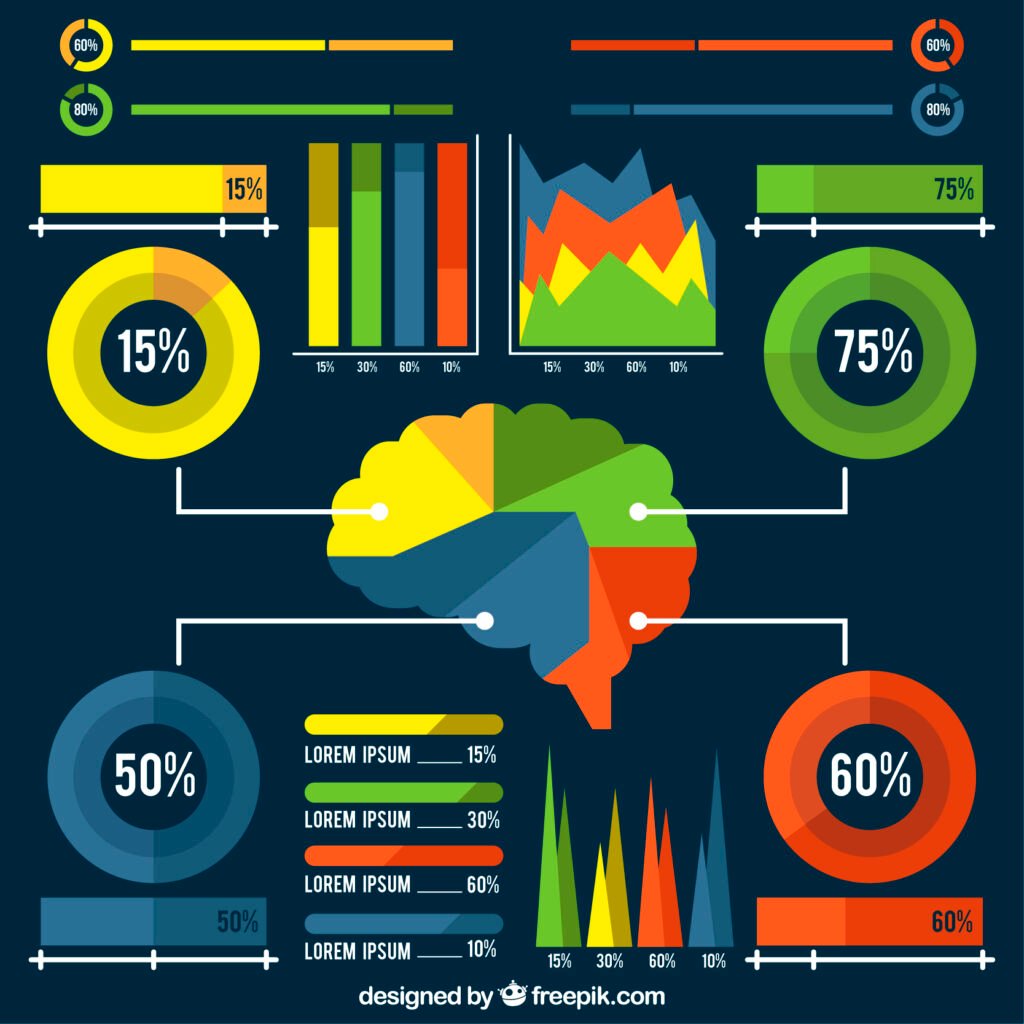
Before rolling out CogniFit organization-wide, leaders must establish a clear rationale for the investment. Fortunately, the data speaks for itself. Cognitive training directly improves focus, decision-making, creativity, and stress resilience — all of which correlate with higher productivity and lower turnover.
When building your business case:
- Quantify the problem. Identify areas where cognitive overload, distractions, or slow learning are affecting performance. Use metrics like employee engagement, absenteeism, or error rates.
- Align with corporate goals. Link cognitive performance to strategic objectives such as innovation, operational efficiency, or customer satisfaction.
- Show measurable ROI potential. Present evidence from CogniFit’s validated studies showing productivity and attention gains.
- Emphasize well-being. Cognitive training supports mental health and work-life balance, aligning with employee wellness initiatives.
With these points, you can position CogniFit not as a “nice-to-have” perk but as a strategic business investment that enhances both human and organizational performance.
2. Onboarding and Assessment: The First Step
The first stage of implementation begins with baseline assessment. Every employee starts with the CogniFit Cognitive Assessment Battery (CAB), a 20–30-minute interactive test that evaluates more than 20 cognitive skills — including attention, memory, reasoning, and coordination.
This assessment serves multiple purposes:
- It creates a personalized cognitive profile for each employee.
- It helps HR identify training priorities at both individual and departmental levels.
- It establishes a baseline for measuring improvement over time.
CogniFit’s assessments are gamified, engaging, and accessible via desktop or mobile devices, ensuring high participation rates.
Once results are collected, the platform automatically generates personalized training programs that adapt to
each user’s needs and goals.

3. Designing a Custom Cognitive Training Program
Successful implementation depends on customization. Each organization is different — a sales team needs strong attention and memory, while an R&D department may benefit more from problem-solving and innovation training.
CogniFit allows administrators to design training paths tailored to roles, departments, and skill priorities.
Here’s an example of how customization might look:
| Department | Cognitive Focus | CogniFit Modules | Expected Benefit |
| Sales & Marketing | Memory, Attention, Emotional Processing | Pattern Recall, Focused Attention, Emotion Recognition | Stronger client engagement and recall during pitches |
| Operations | Planning, Processing Speed, Flexibility | Logistics Planner, Speed Reaction, Task Switch | Improved accuracy and response time |
| Leadership | Decision-Making, Reasoning, Emotional Intelligence | Strategic Thinking, Adaptive Reasoning, Emotion Regulation | Smarter decisions and calmer leadership under pressure |
| Creative Teams | Cognitive Flexibility, Perception, Innovation | Divergent Thinking, Visual Perception, Pattern Association | Enhanced creativity and idea generation |
Training schedules can vary, but most organizations see results with three 20-minute sessions per week. The key is consistency — neural adaptation requires repetition, and CogniFit’s adaptive design ensures continued progress without monotony.
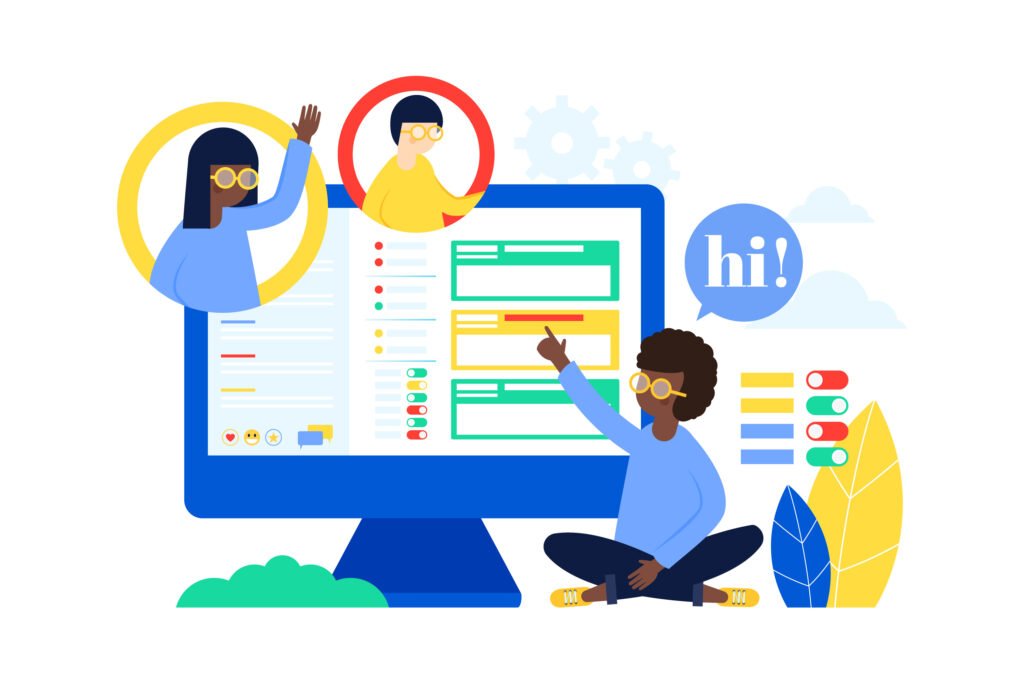
4. Integrating CogniFit into Existing HR and L&D Systems
CogniFit can easily integrate into existing Learning Management Systems (LMS) or HR software. This means cognitive training can become part of broader employee development initiatives rather than a standalone activity.
Some integration strategies include:
- Onboarding Programs: Introduce new hires to CogniFit as part of orientation, helping them assess and improve their cognitive readiness.
- Leadership Development: Use CogniFit data to guide leadership coaching and succession planning.
- Performance Reviews: Incorporate cognitive performance metrics into development discussions (without using them for punitive measures).
- Employee Wellness: Combine CogniFit with mindfulness, stress management, or physical wellness programs for holistic results.
This blended approach ensures cognitive training becomes a natural part of workplace culture, not an isolated experiment.
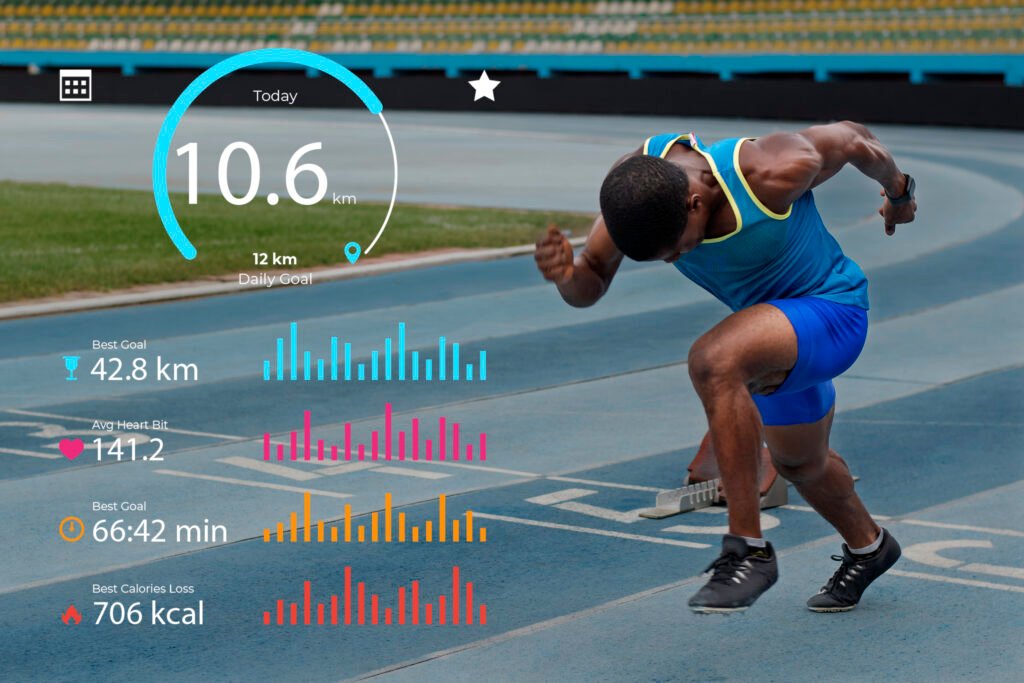
5. Measuring and Tracking Results
One of the greatest strengths of CogniFit is its data-driven analytics. The platform tracks cognitive progress at both individual and group levels, generating easy-to-read dashboards and reports.
Organizations can monitor metrics such as:
- Improvement in attention, processing speed, or memory scores.
- Engagement rates (how often employees use the platform).
- Correlations between cognitive progress and business KPIs (e.g., productivity or error reduction).
Most companies begin to see measurable cognitive improvements after 6 to 8 weeks of consistent use.
HR and management teams can use this data to:
- Identify departments benefiting most from the training.
- Adjust training focus areas over time.
- Celebrate top performers and motivate participation through recognition programs.
CogniFit’s insights are anonymous and ethical, ensuring data privacy while still giving organizations meaningful feedback.

6. Encouraging Employee Engagement
Like any training initiative, cognitive development programs succeed when employees are motivated. CogniFit helps drive engagement through gamification — transforming mental exercises into fun, rewarding challenges.
To reinforce participation:
- Communicate value clearly. Explain how CogniFit helps employees personally — better focus, less stress, improved creativity.
- Create friendly competition. Leaderboards or team challenges can increase participation.
- Celebrate milestones. Recognize improvements publicly or offer small rewards.
- Make it accessible. Allow employees to complete sessions during work breaks or at home.
Companies that promote cognitive training as a wellness and development perk — rather than a mandatory task — experience much higher engagement and retention rates.
7. Training Managers and Leaders
Leaders play a critical role in normalizing cognitive training. When managers participate and share their progress, employees view the initiative as valuable rather than optional.
CogniFit’s leadership programs can help managers:
- Understand the link between cognition and team performance.
- Interpret cognitive data to tailor management approaches.
- Model continuous learning behaviors that inspire teams.
A cognitively aware leader can identify when an employee is mentally fatigued, distracted, or overstressed — and provide appropriate support before performance declines.
Result: A culture of empathy, intelligence, and psychological safety.
8. Overcoming Implementation Challenges
Like any change initiative, introducing CogniFit can face hurdles — skepticism, time constraints, or limited understanding.
Common challenges and solutions include:
- Challenge: Employees feel it’s “just another training app.”
Solution: Emphasize scientific credibility and measurable outcomes. Present research evidence during launch. - Challenge: Managers fear productivity loss due to training time.
Solution: Highlight that sessions are brief and improve long-term efficiency. 20 minutes of training can save hours lost to distraction. - Challenge: Inconsistent participation.
Solution: Set clear goals, gamify progress, and integrate sessions into regular workflows. - Challenge: Difficulty linking results to ROI.
Solution: Use CogniFit’s analytics to track cognitive growth and correlate it with key performance indicators like output or innovation rates.
Addressing these concerns early ensures a smoother rollout and faster adoption.
9. Integration with Corporate Wellness and DEI Initiatives
CogniFit aligns naturally with modern corporate priorities such as wellness, inclusion, and mental health.
- Wellness: Cognitive training reduces stress, boosts mood, and enhances resilience.
- Diversity and Inclusion: By focusing on individual cognitive profiles, CogniFit supports personalized growth regardless of background, education, or age.
- Accessibility: The platform offers multilingual and adaptive interfaces, ensuring inclusivity for global teams.
This holistic alignment makes CogniFit not just a tool for performance, but a symbol of the organization’s commitment to employee growth and mental empowerment.
10. ROI and Long-Term Impact
CogniFit’s true power lies in its sustainability. Unlike motivational programs that fade over time, cognitive training produces lasting neural changes. Employees continue to apply improved focus, memory, and decision-making long after the initial sessions.
Studies and corporate case data indicate that companies using CogniFit report:
- 20–30% improvements in efficiency metrics.
- Up to 40% reduction in stress-related absenteeism.
- Higher innovation rates in R&D and creative teams.
- Greater retention due to increased job satisfaction.
For executives, this translates into measurable financial outcomes: lower turnover costs, higher project throughput, and stronger organizational agility.
In short, CogniFit offers a cognitive return on investment (CROI) — improving the mental capital that drives every business outcome.
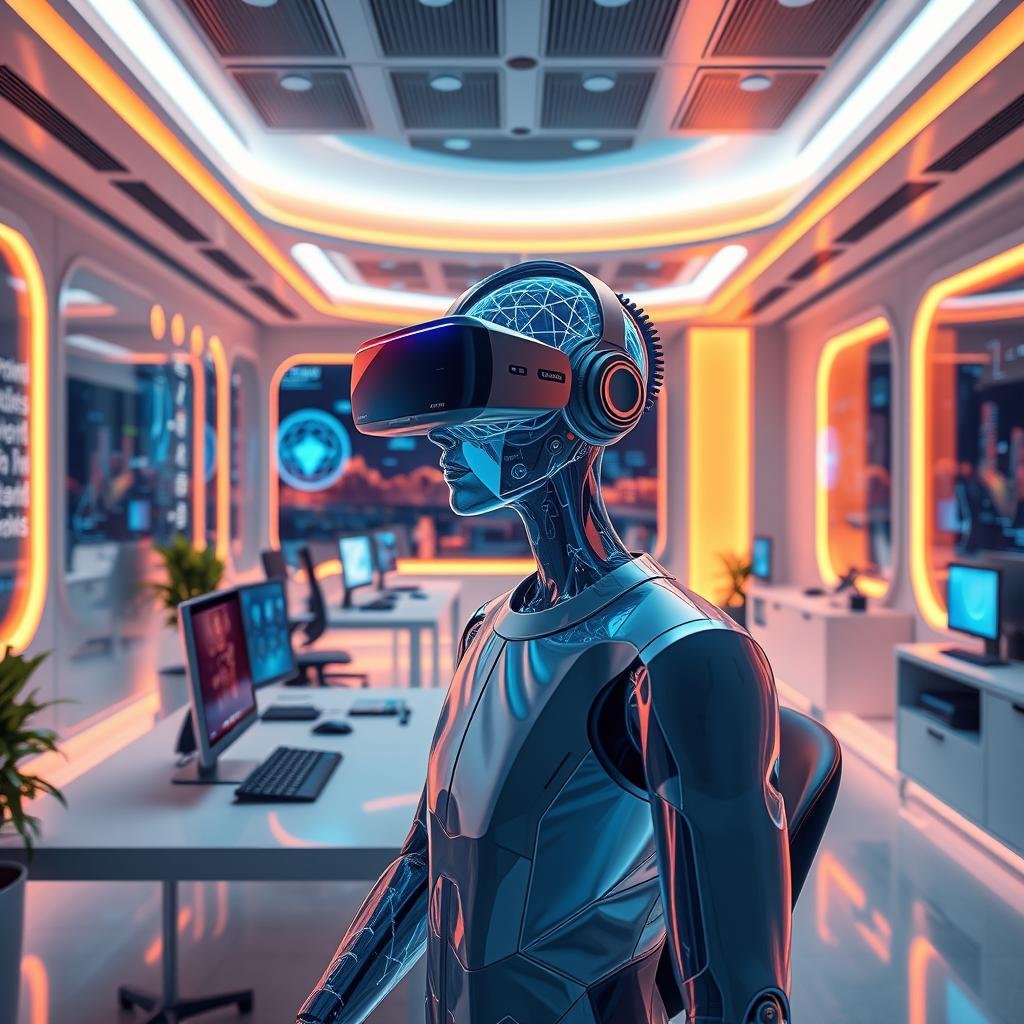
Section 5: The Future of Work and Brain Training in 2025 and Beyond
As we move deeper into 2025, it’s becoming increasingly clear that the future of work belongs to organizations that understand — and invest in — the human mind. Automation, artificial intelligence, and digital transformation are reshaping industries at breakneck speed. Yet amid this wave of technological disruption, one constant remains: human cognition is the foundation of innovation, collaboration, and leadership.
CogniFit stands at the intersection of neuroscience and the workplace of the future. Its vision aligns with the most important trend in business psychology — that the next evolution in productivity won’t come from faster machines, but from smarter, more adaptive minds.
In this final section, we’ll explore the evolving landscape of cognitive enhancement, AI integration, and mental well-being in the workplace — and how CogniFit is uniquely positioned to lead the next revolution in organizational performance.
1. The Rise of Cognitive Capitalism
In the 20th century, the driving force of the global economy was physical capital — machinery, materials, and infrastructure. In the early 21st century, it became digital capital — data, software, and automation. Now, in 2025, a new paradigm has emerged: cognitive capitalism.
Cognitive capitalism values the brain as the primary engine of growth. The creativity of a designer, the analytical precision of a data scientist, the empathy of a customer service representative — these are not just soft skills. They’re measurable cognitive assets that determine whether a company thrives or falls behind.
CogniFit enables organizations to quantify, train, and optimize these cognitive assets. Its scientifically validated framework allows businesses to treat mental performance as an economic resource — one that can be developed, enhanced, and scaled.
In cognitive capitalism, companies that can build and sustain high-performing minds will hold the competitive advantage.
2. AI Meets Neuroscience: The Next Evolution of CogniFit
Artificial Intelligence and neuroscience are converging in powerful ways. CogniFit is at the forefront of this intersection, using machine learning to analyze vast datasets of cognitive performance and deliver hyper-personalized training.
Future iterations of CogniFit are likely to include:
- AI-powered predictive analytics that identify cognitive fatigue or burnout before it happens.
- Real-time feedback integrated with wearable devices to measure focus and stress levels.
- VR and AR simulations for immersive cognitive experiences that replicate real-world decision-making.
- Dynamic team analytics, showing how cognitive strengths complement one another across departments.
By fusing neuroscience with AI, CogniFit is turning cognitive optimization into a continuous, data-driven process — one that evolves alongside each employee’s growth and the organization’s needs.
In 2025, this isn’t science fiction; it’s already happening. Forward-thinking companies are using CogniFit to build the adaptive workforce the modern economy demands.
3. Cognitive Wellness: The New Pillar of Workplace Health
Mental health has become one of the defining issues of the 2020s. The pandemic era highlighted the toll of stress, digital fatigue, and emotional exhaustion. Even as organizations adopt flexible and hybrid work models, the mental strain of constant connectivity remains a challenge.
Traditional wellness programs — yoga sessions, mindfulness apps, or counseling — are valuable but often reactive. CogniFit introduces a proactive dimension to mental health: cognitive wellness.
Cognitive wellness focuses on strengthening the brain’s resilience and adaptability before stress or burnout occur. Employees who train their attention, emotional regulation, and memory are better equipped to manage anxiety, handle workloads, and maintain focus under pressure.
This approach shifts the narrative from “mental health crisis management” to mental strength cultivation — a crucial evolution for companies aiming to build sustainable well-being cultures.
CogniFit’s dual impact — boosting performance while protecting psychological health — makes it one of the most holistic tools in the modern corporate wellness ecosystem.
4. The Hybrid Workplace: Adapting the Brain for Digital Collaboration
Hybrid work, once considered a temporary response to global disruptions, has become a permanent reality. Employees now switch between digital and in-person environments daily, managing multiple channels of communication and balancing autonomy with accountability.
This mode of work places immense demands on executive function — the brain’s ability to plan, focus, and regulate tasks across contexts. CogniFit’s programs are uniquely suited to strengthening these cognitive capacities, helping employees thrive in hybrid and remote settings.
For example:
- Attention training combats screen fatigue and digital distractions.
- Memory exercises help employees retain critical information without constant reference checks.
- Emotional intelligence modules improve virtual collaboration and cross-cultural communication.
In hybrid organizations, cognitive agility is what keeps teams synchronized and innovative. CogniFit provides the neural “glue” that holds these distributed teams together — ensuring that even across time zones, minds remain aligned.
5. Data-Driven Human Resources: Cognitive Analytics for Smarter Decisions
The future of HR is data-driven, personalized, and predictive. CogniFit’s cognitive analytics enable HR professionals to understand employee potential beyond resumes and performance reviews.
By analyzing cognitive patterns, organizations can:
- Identify future leaders based on decision-making and adaptability scores.
- Predict training needs before productivity declines.
- Detect early signs of cognitive overload and intervene proactively.
- Build teams based on complementary cognitive strengths rather than just experience.
This transforms HR from an administrative function into a strategic neuroscience partner — one capable of shaping workforce evolution with precision and empathy.
In 2025, cognitive analytics will be as essential to HR as financial analytics are to accounting. CogniFit’s platform offers a head start on this transformation, providing scientifically validated insights that translate directly into performance outcomes.
6. Education, Upskilling, and the Future Talent Pipeline
As industries evolve, lifelong learning has become the new normal. Yet traditional training methods often fail to address the underlying cognitive skills that enable continuous learning — focus, comprehension, and retention.
CogniFit’s technology fills this gap by building the cognitive foundation that supports upskilling and reskilling. Employees who strengthen their memory and processing speed can absorb new technical skills more efficiently, while improved executive function enhances problem-solving and adaptability.
For education institutions and corporate academies, CogniFit provides a new dimension to professional development — one that makes learning faster, deeper, and more durable.
In the age of AI-driven automation, where many manual tasks are replaced by intelligent systems, the ability to learn faster than competitors may be the single greatest career advantage. CogniFit empowers individuals and organizations alike to cultivate that advantage systematically.
7. The Ethics of Cognitive Technology
As with any emerging technology, ethical considerations play a crucial role in cognitive training. CogniFit approaches this with a strong commitment to data privacy, transparency, and psychological safety.
All cognitive assessments and analytics are anonymized, ensuring that personal results are confidential unless shared voluntarily. The goal is empowerment, not surveillance.
Furthermore, CogniFit’s mission is inclusive — designed to benefit all employees, regardless of age, background, or neurodiversity. Its adaptive design ensures fair and equitable training experiences, reflecting a deep respect for cognitive diversity as a strength rather than a limitation.
By upholding these ethical standards, CogniFit ensures that the cognitive revolution enhances humanity — not exploits it.
8. Looking Ahead: The Cognitive Organization of the Future
Imagine an organization where every employee understands their cognitive strengths, trains their brain like a professional athlete, and collaborates in perfect mental harmony with their peers.
This isn’t a distant dream — it’s the Cognitive Organization of the future. In such workplaces:
- Productivity and innovation stem from optimized cognitive capacity.
- Mental well-being is a shared value supported by neuroscience.
- Leadership decisions are guided by cognitive awareness and empathy.
- Continuous improvement is embedded in the company culture.
CogniFit provides the infrastructure for this vision. Its platform acts as a “digital gym” for the brain, integrating seamlessly into daily workflows and organizational strategy. Over time, it helps companies build a culture of cognitive excellence — where smarter thinking, better focus, and deeper collaboration become second nature.
In a business world where change is the only constant, these organizations will not just survive — they will lead.
9. The Role of CogniFit in the Next Decade
Looking beyond 2025, CogniFit’s role in shaping the future of work will only expand. Advancements in brain-computer interfaces, biofeedback sensors, and AI will make cognitive insights even more precise and actionable.
Possible future developments include:
- Adaptive leadership dashboards that correlate cognitive performance with team dynamics.
- Personalized neurofeedback systems that help employees maintain optimal focus throughout the day.
- Integrated wellness ecosystems combining physical, emotional, and cognitive data for holistic health management.
These innovations will make cognitive enhancement a normal part of professional life — as routine as checking emails or attending meetings. CogniFit will remain at the forefront, providing the scientific foundation and ethical framework that guide this evolution.
10. The Human Brain: The Ultimate Competitive Edge
As automation takes over repetitive and mechanical tasks, the qualities that remain uniquely human — creativity, empathy, critical thinking, and emotional intelligence — become the ultimate competitive edge. CogniFit strengthens precisely these attributes.
By training the brain to process faster, think more flexibly, and respond more rationally under pressure, CogniFit doesn’t just prepare employees for the future of work — it creates it.
Companies that embrace cognitive training are not just investing in productivity; they are investing in human potential. They are building organizations that think, adapt, and innovate with intelligence and heart.

Final Conclusion: The Cognitive Revolution Starts Now
In the modern workplace, success no longer depends only on technology — it depends on how well people think, focus, and adapt. CogniFit turns this insight into action by helping organizations train and strengthen the very engine of performance: the human brain.
Through personalized assessments and adaptive exercises, CogniFit improves focus, memory, decision-making, and emotional intelligence — boosting both productivity and well-being. It integrates seamlessly into HR, wellness, and learning systems, creating a culture of continuous growth and cognitive excellence.
As we move into 2025 and beyond, companies that invest in their people’s mental agility will lead the next era of innovation. Thinking better is the new working harder — and with CogniFit, that smarter future starts today.
